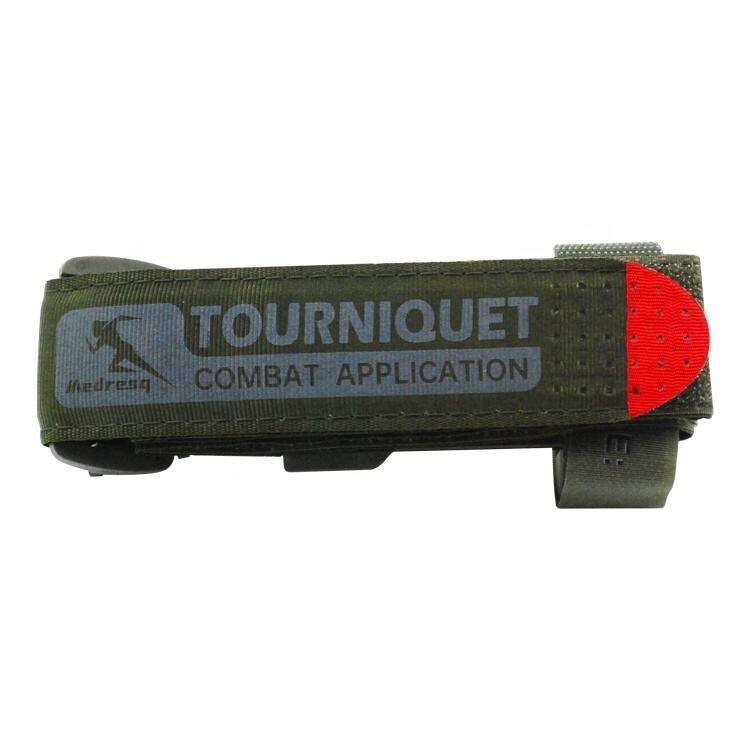Severe injuries on the battlefield or civilian areas can in certain cases be disastrous with a lot of bleeding which may need to be stopped within a matter of few minutes therefore the technique that quickly stops even severe bleeding cases can be the life saver in these fatal situations. One of the most commonly preventable deaths that occur during trauma is because of hemorrhage and the ability to control bleeding plays a vital role in saving a life. Combat Application Tourniquet (CAT) has been an important instrument in controlling hemorrhage, famous in its functionality, design, and adequacy in stressful situations.

The Biomechanics of Effective Tourniquet Application
To figure out how a CAT saves lives, it is needed to touch upon the biomechanics of its use. The major role of any tourniquet should be to apply the appropriate amount of pressure to a limb to stop the flow of blood into the arteries to eliminate excessive blood loss. The CAT can accomplish this using its precision engineered mechanism that balances ease of use and best application of pressure.
Applying the CAT in the right manner results in it causing the tissues and all underlying structures such as the muscles and arteries to be compressed to the extent where circulation of arterial blood comes to a stop. Nonetheless, the most important thing is that it does it without doing any unnecessary harm to the limb. In the design of the CAT, this principle has been incorporated by having a wide strap that helps in spreading the pressure of the band over a large area that would reduce the tissue damage without the hindering the ability to cut off the blood flow.
Windlass which is an important part of the CAT has an imperative role in getting the perfect tension. The user may use the windlass to gradually add pressure until the person is bleeding no more. This mechanical leverage makes it so that the tourniquet can be secured even by a person with low strength or working in poor conditions with very little threat that the tourniquet is going to slip off unintentionally.
In addition, the training should be adequate so that the correct bio mechanics are tapped when using the CAT. By knowing where to apply the tourniquet which is about 2-3 inches above the wound, and by learning how it is possible to determine the lack of further bleeding and distal pulse, it is possible to guarantee successful realization of the hemorrhage treatment without any other complications.

CAT vs. Windlass Tourniquets: Key Functional Differences
Though there are multiple types of the tourniquet like various windlass tourniquets, the CAT has a number of peculiarities that made this type of a tourniquet a tool of choice in military and emergency-medical contexts. The apparent functional difference between the CAT and other windlass tourniquets provides a sound insight as to why it is the most proficient tourniquet that is currently viewed as the standard when it comes to hemorrhage control.
To begin with, the CAT is a one application device, and this is all important in stressful areas where speed is of the essence and reliable too. It may be applied with one hand, which is why it can be used by those people working on themselves in case of need. This is opposed to the other windlass tourniquets which may require two hands or a helper which may not be suitable in one-man rescue situations.
The other noticeable difference is that the CAT model includes a free-moving internal band in its strap. Self-tightening is possible when tension is applied in this band to minimize the slack and make it easier to reach the right pressure. Conversely, the models of the windlass tourniquet in the former period might require continuous manipulation to ensure that the pressure is enforced and this is a major disadvantage in scenarios of high movements.
It has a stabilization plate too which helps in preventing the structure of the tourniquet on the limb too. Most conventional windlass tourniquets do not have such a property and this makes them prone to shifting or loosening in the process of movement and as time, therefore, losing functionality.
Other than this, the fact that the materials that have been used to make CATs (high grade polymers in windlass and strengthened composite used to the strap) have a long life span and are quite usable means that they can endure the rigor of the military assault and hostile environment with a lot of ease. This is one essential factor to consider when assessing tourniquet as an emergency tool whereby failure of tourniquet is not acceptable.
In general, Combat Application Tourniquet (CAT) should be considered a life-saving tool that can be used to treat hemorrhages due to its ease of applying, effectiveness in inhibiting blood flow, and versatility in accordance with the unfavorable conditions. By learning more about the biomechanics that it is utilized and the main functional differentiators that allow this life-saving device to be defined as unique among the traditional windlass tourniquets, users will learn how this life-saving device can be used in an uncompromising struggle with the trauma-induced hemorrhage. The contribution of CAT to the reversal of the trends in critical death that are the result of preventable death through bleeding continues to grow as the trainings and awareness strengthen, and it is made to be an essential component of every trauma care.
 EN
EN
 FR
FR
 DE
DE
 IT
IT
 JA
JA
 KO
KO
 RU
RU
 ES
ES
 AR
AR
 BG
BG
 HR
HR
 DA
DA
 NL
NL
 FI
FI
 EL
EL
 NO
NO
 PL
PL
 PT
PT
 RO
RO
 SV
SV
 TL
TL
 ID
ID
 SR
SR
 UK
UK
 VI
VI
 SQ
SQ
 TH
TH
 TR
TR
 AF
AF
 MS
MS
 CY
CY
 IS
IS
 HY
HY
 AZ
AZ
 KA
KA
 MN
MN
 MY
MY
 KK
KK
 UZ
UZ
 CS
CS



